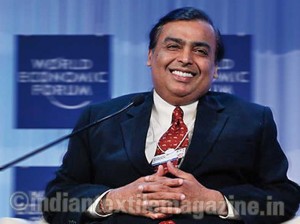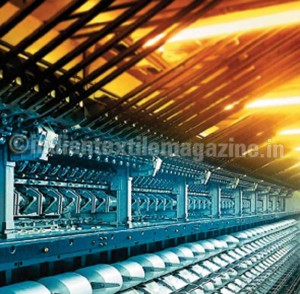
Reliance Industries Ltd. (RIL) continued faring well by achieving a record revenue of Rs. 4,01,302 crores ($67 billion) and net profit of Rs. 21,984 crores ($3.7 billion) during 2013-14. Reliance became the first company in the private sector to record revenues of over Rs. 4,00,000 crores. It also achieved its highest-ever exports of Rs. 2,75,825 crores ($46.0 billion) during the year, contributing a record 69 per cent to revenues. The sustained export growth reflects the ever-increasing demand for its products and services across the world.
Reliance has its presence across many industry verticals, including oil & gas, refining, petrochemical products and retail, as well as its recent entry into the telecom sector with RelianceJio. As regards its performance and future plans for the polyester business, Reliance will invest Rs. 1,80,000 crores over the next three years, with the lion’s share of investments going to the petrochemical business. It already has added 395,000 tonnes of polyester capacity during the year.
Addressing the company’s AGM, Mr. Mukesh Ambani, Chairman, Reliance Group, said: “I am delighted to share with you that we have brought on stream the polyester filament yarn facility of 395,000 MT capacity at Silvassa. This is operating at full capacity and will further strengthen India’s position as a textile major. The polyester business which is over 30 years old continues to service a large number of small enterprises while continuously adding to India’s growing textile production and exports”.
Demand growth in India for petrochemical products during 2013-14 was at a cyclical low compared to the double-digit growth rates seen in the prior five and ten-year periods. Domestic polymer demand growth was particularly weak at three per cent. Reliance increased its polymer production by two per cent to 4.5 MMT and maintained its leadership with a share of 40 per cent in the domestic polymer market.
Further, RIL commissioned its new PFY facility at Silvassa which is the most automated and one of the most environment-friendly plants globally. This is the first in the series of expansions planned, and with the economy and consumption being at the bottom of the down-cycle, the RIL start-ups would be ideally placed at a time when demand would emerge.
Partially oriented yarn (POY), fully drawn yarn (FDY) and polyester textured yarn (PTY) are being produced at the Silvassa site, and all the units are now fully operational. The new PFY plant, considered one of the most automated and environment-friendly projects globally, is co-located close to RIL’s existing texturizing facility at Silvassa, eliminating the packaging and logistics costs. The entire production from this facility has been successfully placed in the domestic and international markets.
With the commissioning of this ultra-modern PFY facility, RIL’s total PFY capacity, including the facilities at Recron, a wholly-owned subsidiary in Malaysia, is now in excess of 1.5 MMTPA. The polyester facility is the first amongst a series of projects which will add significantly to RIL’s petrochemical volumes and enhance cost competitiveness.
 This expansion further strengthens RIL’s position as the world’s largest PFY with a total polyester capacity of 2.8 MMTPA, the company maintained its domestic market leadership position with 20 per cent share in PFY, 67 per cent share in PSF and 41 per cent share in PET.
This expansion further strengthens RIL’s position as the world’s largest PFY with a total polyester capacity of 2.8 MMTPA, the company maintained its domestic market leadership position with 20 per cent share in PFY, 67 per cent share in PSF and 41 per cent share in PET.
Polyester
Indian all fibre textile mill consumption in 2013 was estimated at 9 MMT, up seven per cent over the previous year. Of this, cotton and polyester which are the major textile fibres consumed account for almost 90 per cent of all fibres consumed. In India, the current share of cotton and man-made fibre demand is around 55:45 compared to around 35:65 at the global level. Indian all fibre demand is expected to reach a market size of around 13 MMT by 2020 and 17.5 MMT by 2030.
India is ideally positioned to register an impressive rate of growth with favourable demographics and the dependent population rate growing slower than the workforce. In line with global trends this would pave the way for a larger man-made fabric base, benefiting the polyester industry at large.
The domestic polyester industry witnessed a mixed market sentiment during 2013-14, reflecting an overall moderate and cautious growth pattern. During the year, domestic polyester demand grew by six per cent on y-o-y basis, led by seven per cent growth in PFY, six per cent growth in PET and two per cent growth in PSF. The first quarter of the year witnessed healthy demand growth for all polyester variants due to seasonal upturn and active restocking activities. However, in the second quarter of the fiscal, polyester demand turned cautious amidst volatility in feedstock prices and the Indian rupee.
Fully drawn yarn (FDY) markets, however, witnessed good growth, thanks to import substitution and growing applications in warp knits and embroidery segments. PET market growth was stunted owing to the longer monsoons and prolonged winter, while PSF growth was affected due to the replacement by recycled fibres and filament yarns in certain market segments.
During 2013-14, Indian textile and clothing exports increased by 14 per cent y-o-y. Textile industry-friendly policies and schemes were announced by the Government and several States to encourage the sector’s value addition and growth.
Reliance Industries’ Malaysian operations enhanced its polyester market share in Asia, primarily in Korea, Indonesia and Vietnam. The drivers were value-added products and superior customer service, prompt deliveries and consistent quality. The operations helped expand the textile market share in Turkey by fully leveraging improved demand and developed new markets in Mexico.
RIL minimised the logistics cost by procuring from closer facilities and sold MEG from its own plants to other nearby external polyester facilities. As in-house demand increases during the next fiscal, RIL will divert more in-house volumes while simultaneously optimising external sources to increase profitability.